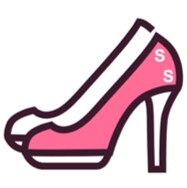
Navigating the realm of online shopping can be a daunting task, especially when it comes to finding the right fit. Not resembling in-store trials, online purchases usually prompt speculation about how clothes will truly fit on your body. Still, remain calm! Armed with some know-how and proper resources, you can master virtual sizing and discover garments that complement your distinctive form. Commence with identifying your measurements. It matters to record bust, waist, hips, and the inseam. Adopt a cloth measuring tape to record accurate sizes. Feel free to refer to the retailer’s size guides. Those measurement tables generally show explicit garment sizes and how they relate to size labels. Likewise, scan purchaser remarks. Previous buyers can be a valuable resource for understanding how a particular item runs in real life. Look for reviews that mention sizing and provide insightful information about the fit of the garment.
Breaking down standard sizes: explanation and use cases.
Across creative, manufacturing, and daily-use domains, standard sizes matter greatly. Regarding furniture, clothing, and building elements, predetermined sizes assure consistent compatibility. Recognizing what standard sizes imply and using them correctly aids in successful outcomes and avoids headaches.
At the outset, dive into conventional size identifiers and meanings. For instance, the conventional paper size often denotes an 8.5 by 11 inch sheet. The convention receives broad recognition in multiple fields and helps printing and communication processes.
- Similarly, in the realm of clothing, standard size charts provide a framework for determining appropriate garment sizes based on body measurements such as height, bust, and waist circumference.
- Moreover, regarding furniture, knowing standard measurements is crucial to ensure correct placement in a room.

Making sense of size tables: tips for exact measuring.
Figuring out garment sizes occasionally resembles decoding a mystery. Unclear size charts commonly make people feel bewildered. But stay relaxed! Implementing these smart tips, you can get precise measurements and leave behind poor-fitting garments. Top priority: obtain a reliable measuring tape. Make certain it flexes to adapt to your body form comfortably. Place yourself before a mirror, stand straight and relax to achieve accurate readings. Encase the fullest bust point with the tape, making sure it remains parallel to the ground. Replicate the process for the waist above the belly button and for the hips at their fullest point. Avoid stretching the tape too tight – it should sit comfortably snug. Study the particular garment’s chart since sizes fluctuate across brands. Pay attention to details like body type or intended fit. Cross-check your numbers with the chart and pick the size that suits your measurements.Conquering online clothing sizes: decoding the subtleties.
Beginning a virtual apparel shopping session can be exciting yet typically poses the particular issue of deciphering online sizing. Unlike physical stores permitting trials, online shopping necessitates greater care. Size charts from sellers supply useful information but rarely replicate a personalized fitting-room feel. For the best chance at an ideal fit, study size charts thoroughly, factor in your measurements, and note brand variances.
- Consult reviews: other buyers’ remarks provide valuable truth about garment sizing.
- Measure properly: a pliable tape and a reflective surface are indispensable for accuracy.
- Avoid depending only on your typical size: since brand dimensions differ, always verify the specific size chart.
Using these recommendations allows you to manage online sizing complexities with assurance and achieve a better shopping outcome.
Size guide fundamentals covering XS through XXL.

Working out the optimum size sometimes proves puzzling. That’s why size charts are beneficial! They supply key details on garment dimensions to assist in choosing the right fit. Whether you shop online or offline, referencing the size chart is recommended. This confirms your buy will fit well and be comfortable to wear. Presenting a concise guide to decode common size abbreviations: * XS: Ultra Small * S: Small * M: Standard * L: Generous * XL: Grand * XXL: Double Extra Large Keep in mind that size charts can vary from brand to brand, so it's always best to check the specific chart provided for each item. Have a great shopping trip!
A practical guide to standard apparel sizing.
Standard clothing sizing can be tricky to understand. Different makers and style categories under the same brand can exhibit widely varying sizing. This can make it tough to find clothes that fit and feel comfortable. Fortunately, simple guidelines can enhance your interactions with standard size apparel. It’s crucial to inspect the size chart for each garment you plan to buy. Don’t depend only on your Size ordinary size. Additionally, record your measurements and align them with the size guide. Recognize that sizes may vary over seasons and across years. Thus, always double-check the provided size chart before completing a purchase. At last, don’t shy away from changing sizes up or down when necessary. Prefer garments that fit properly over items that are overly tight or baggy.Uncovering your perfect look: outfits that flatter your silhouette.
In terms of fashion, one solution does not fit all people. Each physique is unique and deserves garments that bring out its best features. Appreciating your body shape helps you opt for garments that instill confidence.
- Launch by measuring your bust, waist, and hips precisely.
- Think about your height and overall build.
- Recognize these are basic guidelines.

Converting digital measurements into real fits: online sizing simplified.
Landing the correct fit via online buying can be a nuisance. Standard size charts regularly leave shoppers unsure and increase returns and dissatisfaction. However, remain confident! Cutting-edge e-commerce sizing technologies are altering shopping dynamics. These services combine your measurements with algorithms to deliver customized fits and make online visuals reflect reality.
- Wave farewell to uncertainty and welcome confidence when shopping online.
- With the correct size, you can relish your buys without return hassles or misfitting clothes.
Determining bust, waist, hips: mastering the art of size measurement.
Realizing a perfect fit hinges on accurate measurement of body dimensions. Acknowledging bust girth, waistline, and hip dimensions helps in choosing complementary garments. To ensure precision, grab a flexible measuring tape and follow these steps: stand straight with your shoulders relaxed, wrap the tape measure around the fullest part of your bust, keeping it level across your back. Record this measurement in inches or centimeters. Next step: spot your natural waist (just above the navel) and measure around it. Wrap up by placing feet together and encircling the tape at the hips’ widest part, making sure it’s level above the buttocks. Armed with these measurements, you can confidently compare them to size charts provided by different brands. Recognize manufacturer differences in sizing and review multiple size charts. Consider sizing up or down in response to the particular piece’s fit and design.
Overcome sizing woes: the comprehensive fit manual.

Do inconsistent sizes leave your wardrobe feeling off and frustrating? Do you battle with the complicated world of garment sizes? We understand the pain. That's why we've compiled this comprehensive guide to help you conquer the sizing labyrinth and find the perfect fit every time.
- Prepare to explore precise sizing advice including correct self-measurement tips.
- Look into common size inconsistencies and methods to address them across different brands and styles.
- Uncover your proper size for multiple garment categories including tops, bottoms, dresses, and outerwear.
Using our expert tips, you can eliminate sizing headaches and craft a perfectly fitting wardrobe.
Choosing a flawless fit consistently.
When dealing with garments, a crucial aspect is proper fit. A properly fitting outfit enhances confidence and appearance, whereas a badly fitting one can cause self-consciousness and dissatisfaction. Fortunately, finding the correct size can be straightforward rather than intimidating. Adopt these practical suggestions: * Look at the maker’s sizing chart to inform your choice. * Measure your body dimensions precisely. * Don’t base your choice only on your usual size. Consider the fabric and its potential for stretch. * When in doubt between sizes, pick the larger for comfort. Adjust the piece later with alterations if required.